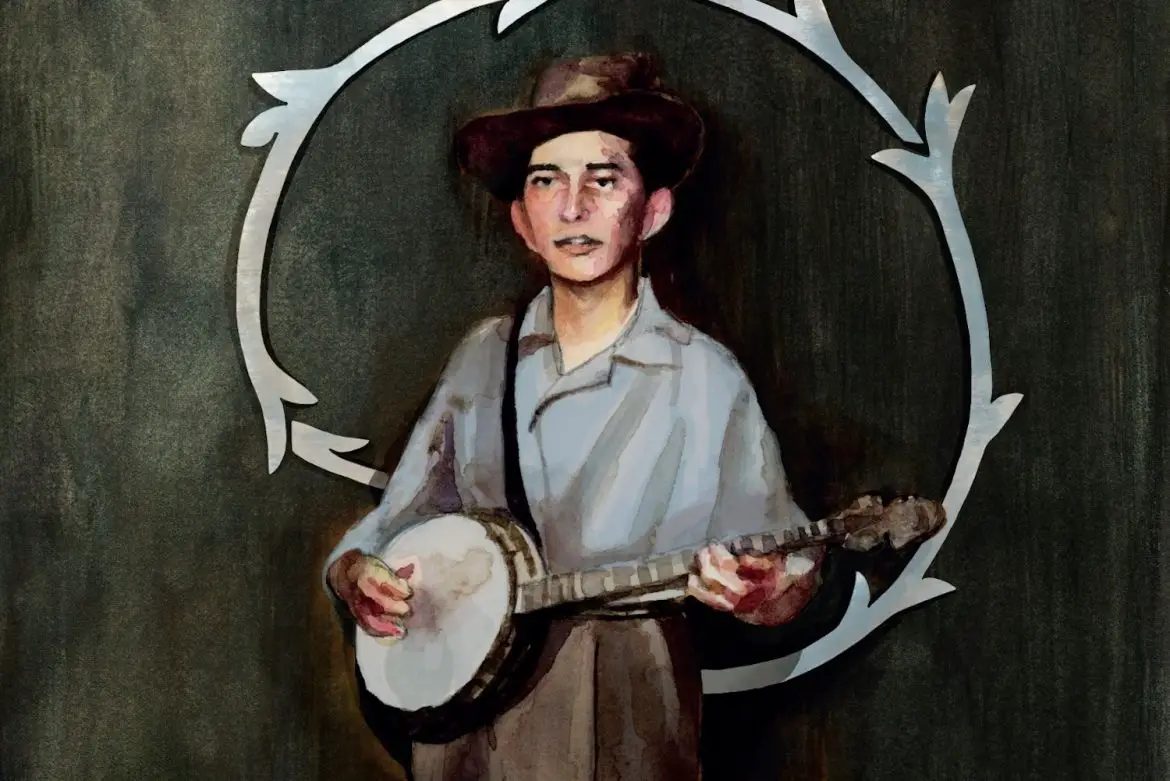Max Wareham’s book, ‘Rudy Lyle: The Unsung Hero of the Five-String Banjo’ is an important contribution to bluegrass literature.
by guest writer Mike Fiorito
Max Wareham’s book Rudy Lyle: The Unsung Hero of the Five-String Banjo is an important contribution to bluegrass literature.
Wareham learned banjo from Bill Keith and Tony Trischka, and is currently a member of the Peter Rowan Bluegrass Band. Wareham’s deep connection to bluegrass history and lore offers a significant insider perspective. As Wareham writes in the introduction, he is a nephew of bluegrass legend, Peter Rowan.
When I first started getting into banjo and bluegrass music, he was very generous with his knowledge and wisdom, and very tolerant when I showed up on his doorstep… We did lots of playing and had many long conversations about bluegrass music. At one point we got to talking about Flatt and Scruggs, and I asked Peter if he had been influenced by Lester Flatt as a singer. Peter told me that he was more interested in the ‘high and lonesome’ sound that started with Bill Monroe’s band from the early ’50s, with Jimmy Martin singing lead.”
As Wareham writes, Jimmy Martin was young and was a blank slate for Monroe to mold into his vision of how the music should sound. That band consisted of Jimmy Martin on guitar and (often) lead vocals, Rudy Lyle on banjo, Vassar Clements on fiddle (and later Red Taylor and Hal Smith) and Joel Price on bass.”

One of the interesting aspects of the book is its structure. Wareham breaks the book up into sections. The foreword by Trischka alone is a gem worth reading. As Trischka writes, “Rudy was also a master of emphasizing usually unaccented beats. Check out Bill Monroe’s ‘Letter from My Darling’ and at 11 seconds you will hear Rudy hit a single note five times in a row, in a fantastically syncopated counterpoint to Monroe’s vocal.”
The next section is a brief but significant profile of Rudy Lyle’s life. I have to say that I learned a lot reading this synopsis and went back to recordings to listen closely to Lyle’s playing. This section is followed by a series of interviews that Wareham had with prominent banjo players and members of Lyle’s family, all of which are illuminating and valuable additions to bluegrass history. It is especially important that Wareham was able to speak with banjo legends Bill Emerson and Sonny Osborne before they passed away.
After these wonderful interviews, Wareham provides detailed banjo tablatures of songs that Lyle played on. I am not a banjo player, but I know that this will be valuable to generations of future banjo players who want to better understand the history of bluegrass banjo and the contributions that Lyle brought to the instrument. We are provided with a lot of detail around “how” to play the songs:
“Right hand fingerings are omitted except when atypical fingerings are used. Left hand fingerings are displayed as follows. Black circles represent frets that would be held down; white circles represent notes available from the position but not held down when not in use.”
There are lots of other tidbits of information in this book, like the story of Wareham’s search and dramatic discovery of the Gibson RB-3 Mastertone banjo that Lyle played. We’re also treated along the way with snippets from newspaper articles and wonderful photographs.
Rudy Lyle: The Unsung Hero of the Five-String Banjo will be enjoyed by anyone interested in bluegrass history and will be especially helpful to folks interested in learning Lyle’s unique style. I highly recommend giving Wareham’s book a read.
Rudy Lyle: The Unsung Hero of the Five-String Banjo will be released Aug 23rd, 2022 but is available for pre-order now. To pre-order or get more info, please go to the link here.
— —
Mike Fiorito is an author and freelance music reviewer. His book Falling from Trees won the 2022 Independent Press Distinguished Book Award. Mike’s latest book, Mescalito Riding His White Horse, Inspired by the Music of Peter Rowan, is available for pre-order. For more information, please go to: https://mikefiorito.com
— — — —








